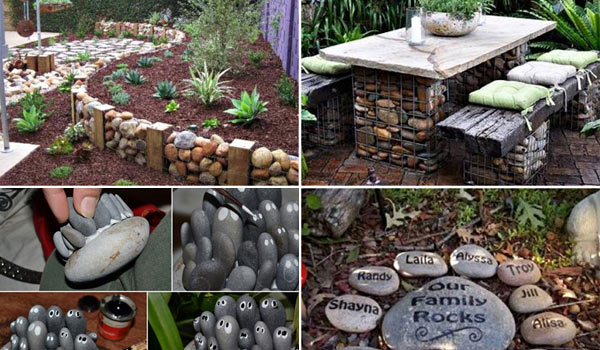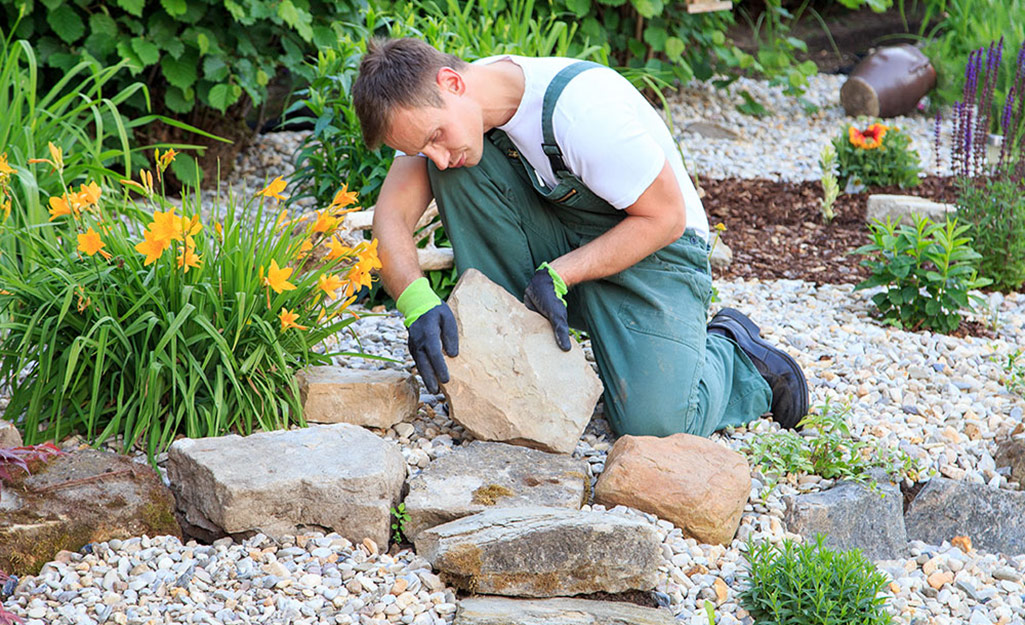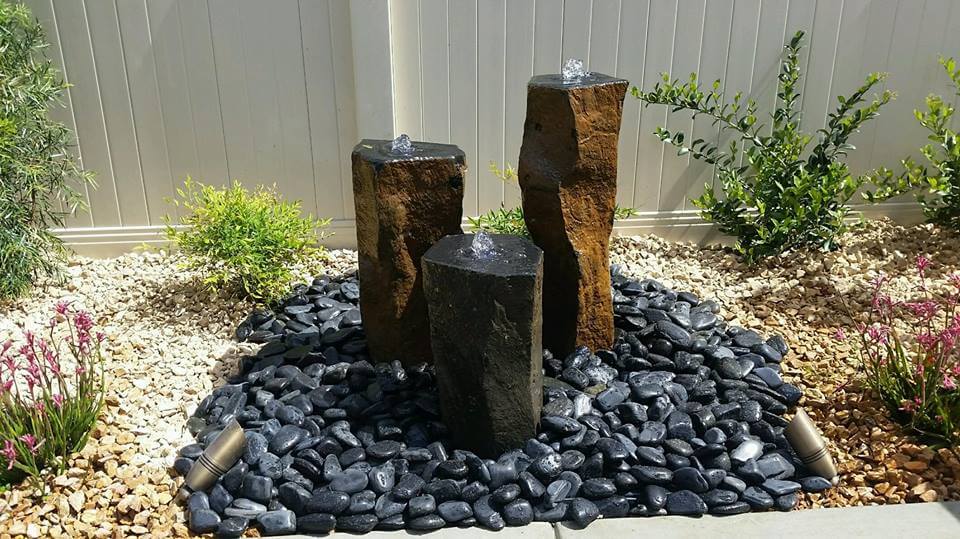When it comes to enhancing the beauty of your garden, few elements are as versatile and striking as rocks. They can be used to create stunning landscapes, serve as functional elements, and add a touch of nature’s raw beauty to your outdoor space. In this article, we will explore the types of rocks suitable for garden decoration, benefits of using rocks, personal experiences, and tips to maximize their aesthetic appeal.
The Allure of Rocks in Landscaping
Rocks have been used in gardens for centuries, and it’s easy to see why. They offer durability, require minimal maintenance, and come in a variety of shapes, sizes, and colors. My own experience with rocks in my garden transformed an ordinary space into an extraordinary oasis. Let’s dive into the different types of rocks available for garden decoration.
Types of Rocks for Garden Decoration
| Type of Rock | Description | Best Use | Cost Range |
|---|---|---|---|
| Granite | Hard and durable with a natural sparkly finish. | Pathways, borders | $50 – $100 per ton |
| River Rocks | Smooth and rounded, with a variety of colors. | Aquatic gardens, mulch | $75 – $150 per ton |
| Flagstone | Flat stones ideal for patios and walkways. | Patios, walkways | $100 – $250 per ton |
| Lava Rock | Porous and lightweight, great for drainage. | Garden beds, mulch | $80 – $120 per ton |
| Boulders | Large stones creating dramatic focal points. | Focal points, waterfalls | $150 – $300 per ton |
| Pebbles | Small, smooth stones perfect for decorative areas. | Ground cover, decorative borders | $70 – $130 per ton |

Benefits of Using Rocks in Your Garden
1. Low Maintenance
One of the greatest advantages of incorporating rocks into your garden is their low maintenance nature. Unlike plants, they don’t require watering, pruning, or fertilizing. This can save you time and effort, allowing you to enjoy your garden without constant upkeep.

2. Aesthetic Appeal
Rocks can enhance the overall aesthetics of a garden. Whether you choose colorful pebbles, elegant flagstones, or dramatic boulders, incorporating rocks adds texture and depth to your landscape design. My garden’s transformation came alive with the addition of granite edging around flower beds and smooth river rocks scattered along the pathways.
3. Environmental Benefits
Rocks help prevent soil erosion and can improve drainage in areas prone to flooding. They also provide habitats for beneficial wildlife, creating a balanced ecosystem in your garden.

4. Versatility
Rocks can be used in numerous ways—from creating walkways and borders to serving as focal points or mulch. Their versatility means that you can get creative and use them to suit your personal style and garden layout.
Personal Experience: My Rock Garden Journey
When I started redesigning my garden, I experimented with different rock placements. I initially placed river rocks around my pond to minimize mud, but later added boulders as seating areas. The combination instantly made my garden feel more cohesive and inviting.

Best Practices for Using Rocks in Garden Decoration
1. Planning and Design
Before you rush to buy rocks, take time to plan your garden layout. Consider the size of the space, existing plants, and the overall style you wish to achieve. Sketching can be helpful for visualizing how rocks will fit into your garden.

2. Choosing the Right Rocks
Not all rocks are created equal. Depending on your climate, certain rocks may be better suited for your garden. For example, lava rocks are excellent for hot climates because they retain moisture while allowing drainage.
3. Placement Techniques

- Layering: Create depth by layering different sizes and types of rocks.
- Grouping: Use groups of rocks to create focal points, such as a rock garden or a natural seating area.
- Pathway Design: Use flat stones, like flagstone, for walkways to create an inviting path.
4. Combining with Plants
Rocks can complement plant life beautifully. Consider surrounding plants with smaller rocks to highlight their colors or use larger boulders to provide a natural backdrop. My favorite combination has been using dark granite with bright yellow flowers—it brings out their vibrancy.

Cost Considerations When Decorating with Rocks
While rocks can be a cost-effective landscaping solution, it’s important to budget accordingly. Here’s a quick breakdown of potential costs:
- Small Rocks: $70 – $130 per ton
- Medium Rocks: $80 – $150 per ton
- Large Boulders: $150 – $300 per ton
Consider purchasing in bulk for better deals, and always compare prices from different suppliers. Some local quarries may have great options at competitive prices.
Pros and Cons of Using Rocks in Garden Decoration
Pros
- Durability and longevity
- Low maintenance
- Variety of colors and shapes
- Natural habitat for wildlife
- Enhances drainage and reduces erosion
Cons
- Heaviness makes installation challenging
- Potential for weeds to grow between rocks
- Can become hot in the sun, affecting nearby plants
FAQs About Rocks for Garden Decoration
1. Are rocks a good substitute for mulch?
Yes! Rocks can be a great substitute for organic mulch. They help with moisture retention and prevent soil erosion while requiring less maintenance over time.
2. How do I prevent weeds from growing in my rock garden?
To minimize weeds, start with a landscape fabric beneath the rocks. This barrier can help prevent weed growth while allowing water to drain.
3. Can I paint rocks for my garden decoration?
Absolutely! Painting rocks can add a unique touch to your garden. Just ensure you use outdoor-safe paint and sealant to protect your designs from the elements.
4. How do I choose the right size of rocks for my garden?
Consider the scale of your garden and existing landscaping. Smaller pebbles work well as ground cover, while larger boulders are perfect for creating focal points.
5. Where can I buy rocks for garden decoration?
Rocks can be purchased from local quarries, garden centers, or landscape suppliers. Always compare prices and quality before making a purchase.
Conclusion
Rocks can truly transform your garden, offering versatility, beauty, and sustainability. With the right planning and creativity, you can create a stunning outdoor space that reflects your personal style. From my personal journey, I can attest to the joy and satisfaction that comes with incorporating these natural elements into your garden. So gather some rocks, get creative, and let your garden shine!